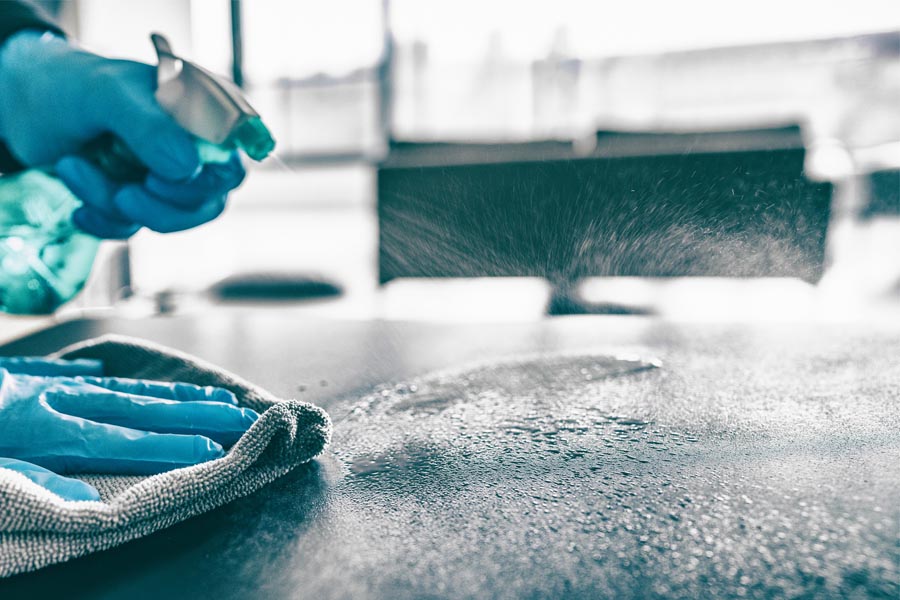Strategies to Prevent the Spread of Influenza
The flu, or influenza, is a contagious respiratory illness that can be very dangerous to people of all ages and backgrounds. The main symptoms of the flu are fever, chills, body aches, runny nose, headaches, coughs, fatigue, and loss of appetite. The virus can sometimes lead to severe complications such as pneumonia and death. People with weakened immune systems or underlying medical conditions and pregnant women are at a greater risk of developing severe complications from the flu. To help protect themselves, these individuals need to get the seasonal flu influenza vaccine and take everyday preventive actions to reduce their risk of getting sick.

Flu season typically occurs during the fall and winter months in the Northern Hemisphere, usually from October through May. In the United States, flu activity is usually highest between December and February, although it can last as late as May. During this time of year, colder temperatures and less daylight can increase the risk of catching the virus.
Facility managers can help reduce the chance of flu outbreaks in their buildings by following some best practice strategies. In this article, we will explain some of the key steps you can take to help protect the people in your facility.
How the flu impacts businesses in the United States
The CDC estimates that the 2022 flu season resulted in:
- 27 to 54 million flu illnesses
- 12 to 26 million medical visits
- 300,000 to 650,000 flu hospitalizations
- 19,000 to 58,000 flu deaths
The flu is highly contagious and can spread quickly in enclosed spaces, such as offices and other businesses. During flu season, many companies lose hours of productivity due to employee absences. The U.S. Centers for Disease Control and Prevention (CDC) estimates that the annual average economic impact of the flu on businesses is approximately $10.4 billion in direct costs from lost productivity.
Reducing the impact of the flu on your business
Tip #1 - Increase cleaning resources while your building is occupied
Extra cleaning resources focused on disinfecting high-touch surfaces during work hours can help reduce the spread of influenza. Because the virus typically only survives on surfaces for two to eight hours, cleaning must be done more frequently when the building is occupied. Disinfecting surfaces when the building is unoccupied will have reduced benefits.
Tip #2 - Use EPA-registered disinfectants on high-touch surfaces
Be sure to use EPA-registered disinfectants with kill claims against Influenza A and Norovirus. Also, be sure to follow the instructions on the label with respect to application methods and dwell times. Hillyard offers two good candidates for this purpose.
- Q.T.-TB: Q.T.-TB is designed specifically as a general ready-to-use cleaner and disinfectant for use on hard, non-porous surfaces in homes, hospitals, nursing homes, schools, and food processing plants. QT-TB kills Influenza A after two minutes of dwell time.
- Q.T. 3: Q.T. 3 is a hard surface cleaner disinfectant with a broad claim set that provides efficacy against various pathogens with fast contact times. One minute contact time to kill HIV-1, Influenza Type A / H3N2, and SARS-Related Coronavirus 2 (cause of COVID-19). Three minutes of contact time kills a broad array of viruses and bacteria. See the product label for a complete list.
High-touch surfaces are any surfaces that we come into contact with frequently, such as doorknobs, countertops, light switches, and faucet handles. To prevent the spread of flu viruses, it is important to disinfect these surfaces regularly. Other high-touch surfaces include computer keyboards and mice, TV remotes, telephones, toys, and game controllers.

Tip #3 - Don't waste resources disinfecting surfaces where flu transmission is unlikely to occur
During flu season, it is important to allocate resources effectively and focus on areas that are most likely to contribute to flu transmission. While disinfecting surfaces is essential to preventing the spread of the flu, it is also important to prioritize areas where transmission is more likely to occur. For example, high-touch surfaces such as doorknobs, light switches, and shared equipment should be regularly disinfected. On the other hand, surfaces like walls and floors that are rarely touched or have minimal contact with individuals may not require frequent disinfection. By prioritizing resources and focusing on areas where flu transmission is more likely, we can effectively minimize the spread of the flu and optimize the use of disinfectants.
Tip #4 - Encourage good hand-washing technique
Washing your hands with soap and warm water is essential in preventing the spread of harmful germs. According to the World Health Organization (WHO), washing hands with soap and warm water for at least 20 seconds is the most effective way to remove contaminants from your hands. Follow these steps for the best results:
- Wet your hands under warm running water.
- Apply liquid soap to your hands.
- Lather the soap and rub your hands together for at least 20 seconds. Make sure to cover all surfaces of your hands, including your palms, fingers, and the backs of your hands.
- Rinse your hands thoroughly under running water.
- Dry your hands using a clean towel.
Proper handwashing helps remove contaminants that can cause illnesses, such as the common cold, flu, and respiratory viruses. It is essential to wash your hands before eating, after using the restroom, and after coughing, sneezing, or blowing your nose to prevent infections. Click here for downloadable handwashing posters you can print and post in your facility.
Let's work together to minimize the impact of influenza viruses

Your local Hillyard representative is an expert in disinfection and flu prevention. Let's work together to reduce the number of sick people in your facilities. Use the "I'm interested" form at the bottom of this page to contact us. One of our representatives will contact you to get you the information and products you need.
Frequently Asked Questions
How can I prevent getting the flu?
According to the Centers for Disease Control (CDC), the best way to prevent the flu is by getting a flu vaccine each year. It’s recommended that everyone 6 months and older should get an annual flu shot, as it can help reduce the risk of becoming ill with the virus. Additionally, there are other measures you can take to reduce further your risk of becoming sick with the flu; avoid close contact with sick people, wash your hands frequently, and avoid touching your eyes, nose, or mouth.